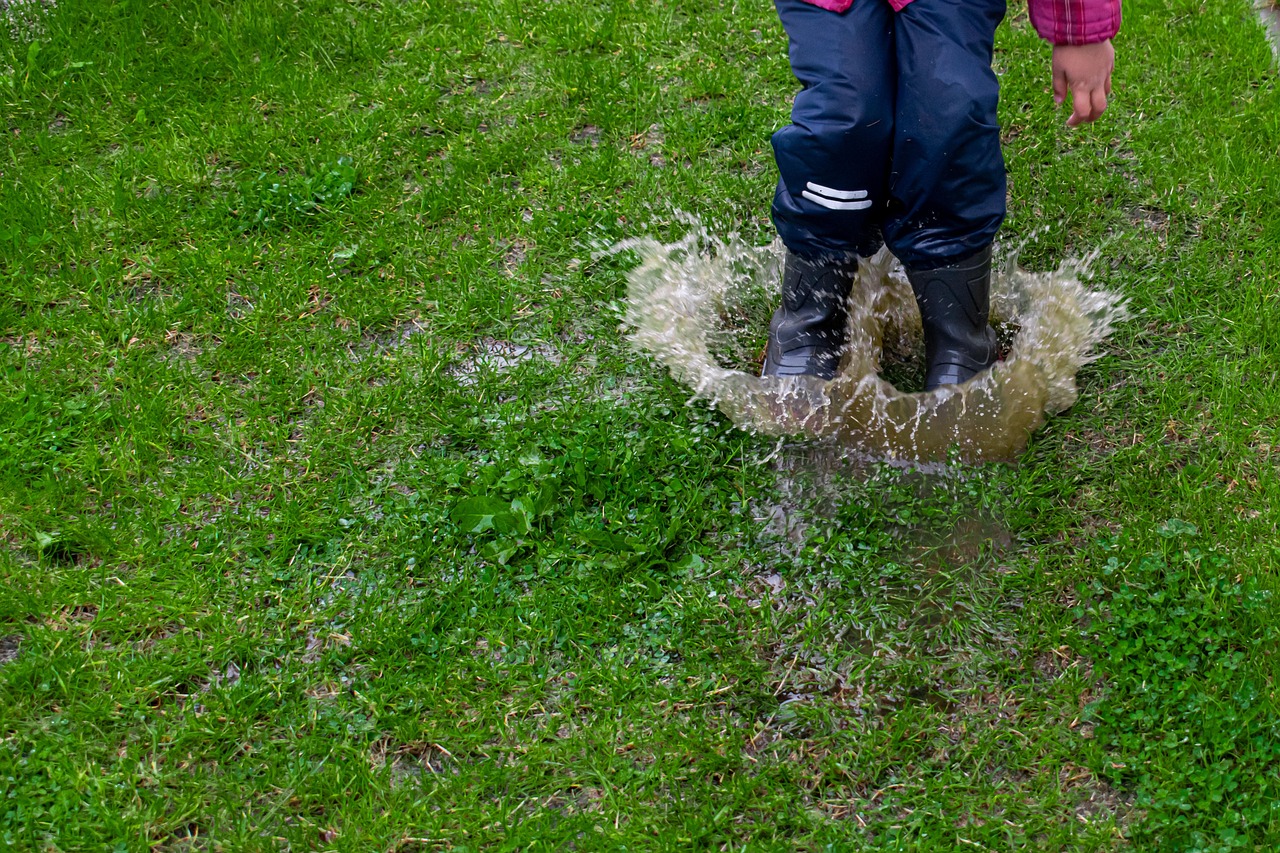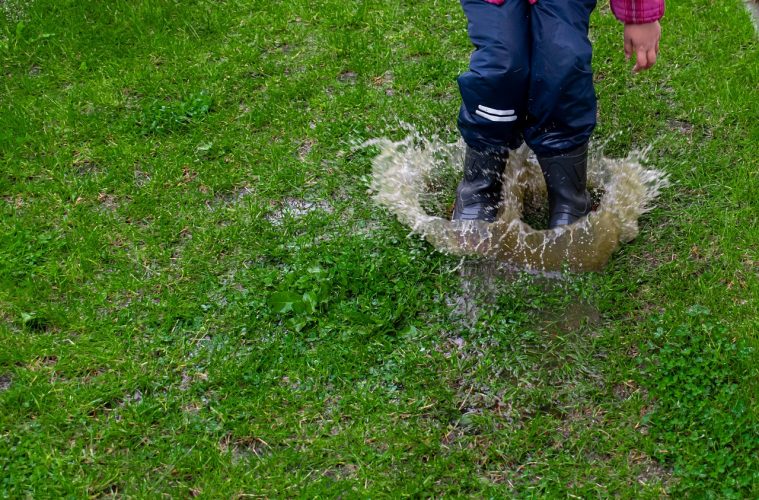If your lawn frequently floods after rain, it can harm your turf and promote algae and fungal issues. However, there are several steps you can take to alleviate the problem.
What causes waterlogging
When your lawn turns squelchy to walk on or turns into a lake every time it pours. This means your lawn is waterlogged. When this happens, you’ll have difficulty maintaining a good quality, healthy lawn. Waterlogging occurs when water displaces air from the spaces between soil particles, causing grass roots to suffocate and resulting in puddles.
This issue is common in poorly drained or heavily compacted soil. Any soil that does not drain well can lead to a waterlogged lawn. To prevent your lawn from developing patches, algae, and fungal problems, there are several steps you can take to improve the drainage.

Image Credit: Pixabay
Simple steps to improve your lawn
Understanding the drainage problems on your lawn is the first step to fixing them. Observe how the water gets into your lawn and how it sits. You also need to understand that drainage does not happen instantly. Rainwater is never completely absorbed immediately by the soil. The grassroots can create a thick barrier that can greatly reduce your soil’s permeability.
Aerate you soil
Soil aeration allows you to improve the drainage and adds air into the soil. The grassroots are also improved with aerators. You can do aeration by spiking the lawn with a garden fork or using a hollow tine aerator. The best aeration tool to use depends on the severity of waterlogging and the type of soil on your lawn. When your lawn is prone to waterlogging, aerating it every autumn season, just before the wet winters of Cape Town.
Look after your grass
Wet soil and dead patches will allow moss to thrive in lawns over winter. You need to feed your lawn with fertiliser that’s rich in phosphorus. This helps promote root growth, covering up the patches caused by waterlogged lawns.
Digging a ditch
Digging a ditch can also be a feasible tip to compact waterlogged lawns. Digging at the lowest point allows the water to run and sit somewhere it does any damage to your lawn. However, digging a ditch is not always a suitable suggestion for most gardens.

Image Credit: Pexels
ALSO SEE: UNLOCKING THE HEALING POWER OF MEDICINAL HERBS
Feature Image: Pixabay

